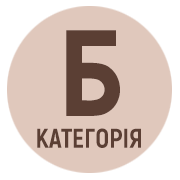DIGITALIZATION IN THE INCLUSIVE EDUCATIONAL PROCESS: OVERCOMING LANGUAGE BARRIERS
DOI:
https://doi.org/10.32782/2412-9208-2024-3-345-353Keywords:
digitalisation, inclusive educational environment, language barriers, universal design, accessibility, learning platforms, educational processAbstract
The article explores the role of digitalisation in overcoming language barriers and creating an inclusive learning environment for students with diverse needs. The main problem addressed in the paper is the limited access to knowledge due to language, physical and cognitive barriers, which remains an important challenge for traditional educational systems. The purpose of the article is to analyse innovative digital solutions that can contribute to the formation of adapted learning environments for all participants in the educational process, taking into account their individual characteristics and needs. The article considers various technologies that can simplify the learning process for students with disabilities. These include adaptive learning platforms, text-to-audio programs, interactive applications that support sign language, and specialised mobile applications with built-in functions for users with special needs. An important aspect of the work is the analysis of international experience, including cases from Canada, Germany and the United States, where such technologies help to integrate the principles of inclusion into education. The author also focuses on international accessibility standards, which are the basis for developing digital learning products that meet modern requirements. The use of international standards allows for the implementation of universal solutions in the educational process that are accessible to all students and take into account their individual needs. The article shows that the introduction of digital tools and platforms is an important step towards more accessible, flexible and equitable education. The proposed approaches can serve as a basis for developing programmes and strategies aimed at integrating digitalisation into the educational process, which will reduce barriers to learning and promote an open educational environment for all students, according to their characteristics and capabilities.
References
Базилевич В. Методики інклюзивного навчання. Київ: Видавництво Академія, 2020. 113 с.
Давиденко Г. Цифрова інклюзія та доступність: соціальна діджиталізація. Вінниця: ТВОРИ, 2023. 240 с. URL: https://vsei.vn.ua/images/Doc/Nauka/Inclusivna_osvita/cifrova-inklyuziya-ta-dostupnist-socialna-didzhitalizaciya.pdf. (Дата звернення: 20.09.2024).
ДСТУ EN 301 549:2022 «Інформаційні технології. Вимоги щодо доступності продуктів та послуг ІКТ». URL: https://www.undp.org/sites/g/files/zskgke326/
files/2023-06/korotkiy_posibnik_z_cifrovoi_dostupnosti_-_ukr.pdf. (Дата звернення: 20.09.2024).
Тарасенко П. Європейський досвід подолання мовних бар’єрів. Львів: Видавничий дім «Світ», 2021. 192 с.
European Digital Education Plan 2021–2027. URL: https://education.ec.europa.eu/focus-topics/digital-education/action-plan. (Дата звернення: 20.09.2024).
Global Education Monitoring Report. Language Policies in Multicultural Classrooms. New York: GEM, 2018. URL: https://unesdoc.unesco.org/ark:/48223/pf0000266078. (Дата звернення: 20.09.2024).
National Center on Deafness. Communication Tools and Techniques for Inclusive Education. Los Angeles, 2020. 480 с.
The Global Accessibility Awareness Day (GAAD): інклюзія через технології. URL: https://accessibility.day/. (Дата звернення: 20.09.2024).
UNESCO. Inclusive Education: Removing Language Barriers in Schools. Paris: UNESCO, 2019. URL: https://unesdoc.unesco.org/ark:/48223/pf0000368478. (Дата звернення: 20.09.2024).
WAI W3C. Web Accessibility Initiative. URL: https://www.w3.org/WAI/ (Дата звернення: 20.09.2024).






